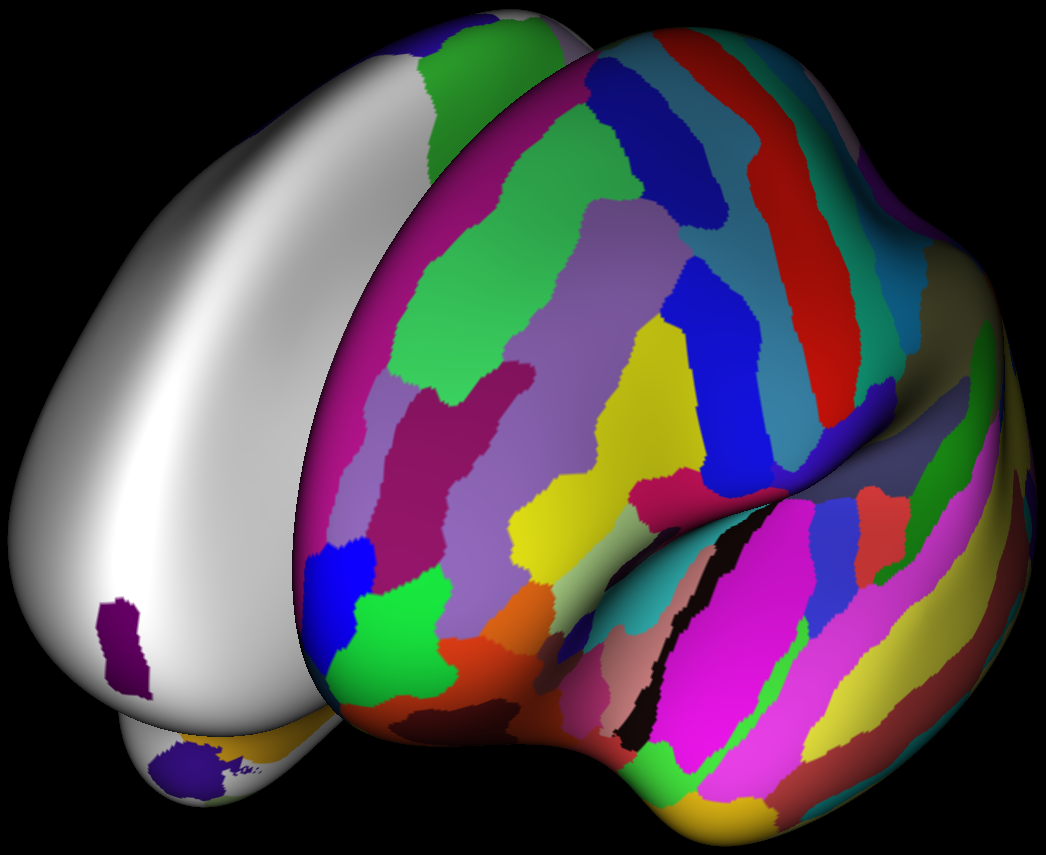Note
Go to the end to download the full example code.
Parcellize brain surface¶
Parcellize the brain surface using .annot files. This example use Nibabel to read the .annot file.
See https://surfer.nmr.mgh.harvard.edu/fswiki/CorticalParcellation for files used in this example.

import numpy as np
from visbrain.gui import Brain
from visbrain.objects import BrainObj
from visbrain.io import download_file
file1 = 'lh.aparc.a2009s.annot'
file2 = 'rh.aparc.annot'
# Download files if needed :
path_to_file1 = download_file(file1, astype='example_data')
path_to_file2 = download_file(file2, astype='example_data')
# Define a brain object :
b_obj = BrainObj('inflated', hemisphere='both', translucent=False,
cblabel='Parcellates example', cbtxtsz=4.)
"""Parcellize the left hemisphere using the Destrieux Atlas. By default, no
parcellates are selected
"""
b_obj.parcellize(path_to_file1, hemisphere='left')
"""If you want to get the list of all predefined parcellates, use the
`get_parcellates` method which returns a pandas DataFrame with the index, the
name and the color associated to each parcellates
"""
df = b_obj.get_parcellates(path_to_file2)
# print(df)
"""Select only some parcellates. Note that this parcellization is using an
other atlas (Desikan-Killiany atlas)
"""
select = ['insula', 'paracentral', 'precentral', 'precuneus', 'frontalpole',
'temporalpole', 'fusiform', 'cuneus', 'inferiorparietal',
'inferiortemporal', 'precentral', 'superiorfrontal',
'superiortemporal']
"""Instead of using predefined colors inside the annot file, we use some data
"""
data = np.arange(len(select))
b_obj.parcellize(path_to_file2, hemisphere='right', select=select, data=data,
cmap='Spectral_r')
"""Finally, pass the brain object to `Brain` and disply the GUI
"""
Brain(brain_obj=b_obj).show()